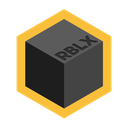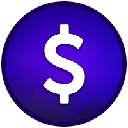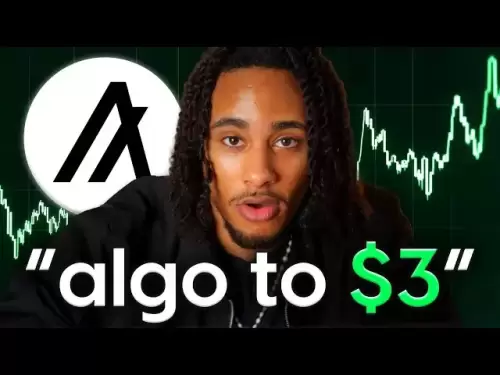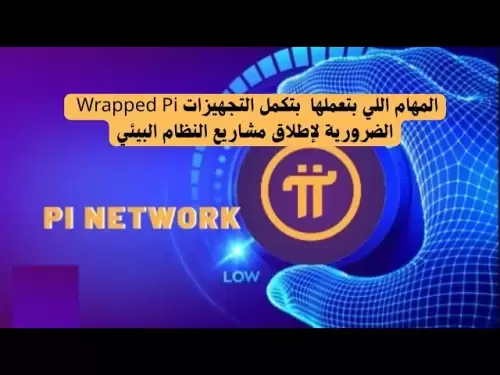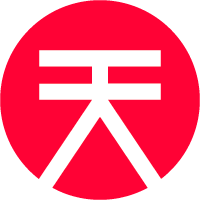-
 Bitcoin
Bitcoin $106,754.6083
1.33% -
 Ethereum
Ethereum $2,625.8249
3.80% -
 Tether USDt
Tether USDt $1.0001
-0.03% -
 XRP
XRP $2.1891
1.67% -
 BNB
BNB $654.5220
0.66% -
 Solana
Solana $156.9428
7.28% -
 USDC
USDC $0.9998
0.00% -
 Dogecoin
Dogecoin $0.1780
1.14% -
 TRON
TRON $0.2706
-0.16% -
 Cardano
Cardano $0.6470
2.77% -
 Hyperliquid
Hyperliquid $44.6467
10.24% -
 Sui
Sui $3.1128
3.86% -
 Bitcoin Cash
Bitcoin Cash $455.7646
3.00% -
 Chainlink
Chainlink $13.6858
4.08% -
 UNUS SED LEO
UNUS SED LEO $9.2682
0.21% -
 Avalanche
Avalanche $19.7433
3.79% -
 Stellar
Stellar $0.2616
1.64% -
 Toncoin
Toncoin $3.0222
2.19% -
 Shiba Inu
Shiba Inu $0.0...01220
1.49% -
 Hedera
Hedera $0.1580
2.75% -
 Litecoin
Litecoin $87.4964
2.29% -
 Polkadot
Polkadot $3.8958
3.05% -
 Ethena USDe
Ethena USDe $1.0000
-0.04% -
 Monero
Monero $317.2263
0.26% -
 Bitget Token
Bitget Token $4.5985
1.68% -
 Dai
Dai $0.9999
0.00% -
 Pepe
Pepe $0.0...01140
2.44% -
 Uniswap
Uniswap $7.6065
5.29% -
 Pi
Pi $0.6042
-2.00% -
 Aave
Aave $289.6343
6.02%
How is the Binance transaction fee calculated?
Binance's dynamic transaction fees depend on factors like trading pair, order type (maker/taker), trading volume (VIP level), and BNB usage; higher volume and BNB payments result in lower fees.
Mar 14, 2025 at 04:40 pm
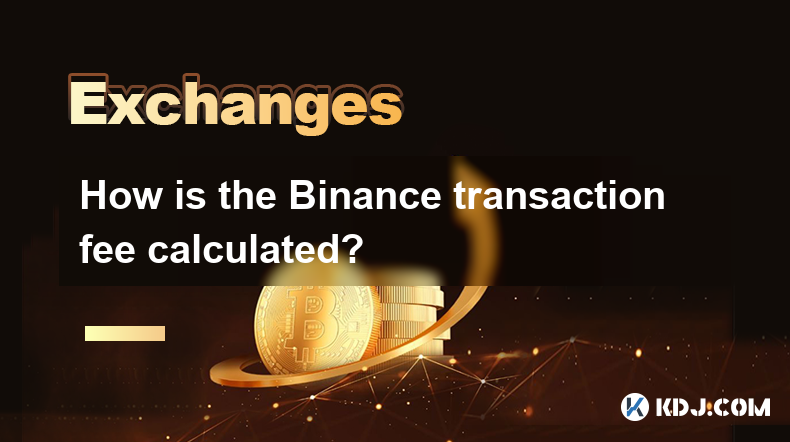
Key Points:
- Binance's transaction fees are dynamic and depend on several factors, including the cryptocurrency being traded, the trading pair, the trading volume, and the user's VIP level.
- Fees are typically expressed as a percentage of the trade value or a fixed amount, varying between maker and taker orders.
- Binance offers a tiered fee structure, rewarding higher trading volume with lower fees. Users can reduce their fees by holding BNB.
- Understanding fee calculations is crucial for maximizing profitability in cryptocurrency trading.
- Various factors influence the final fee, and careful attention to these details is necessary for effective cost management.
How is the Binance Transaction Fee Calculated?
Binance's transaction fee calculation isn't a simple, fixed percentage. It's a dynamic system designed to incentivize high-volume trading and reward loyal users. The core components affecting the fee are the trading pair, the order type (maker or taker), your trading volume (which determines your VIP level), and whether you're using BNB to pay for fees.
First, let's understand the difference between maker and taker orders. A maker order adds liquidity to the order book (it doesn't immediately fill an existing order), while a taker order removes liquidity (it fills an existing order). Generally, maker orders have lower fees than taker orders. This encourages users to contribute to the overall liquidity of the exchange.
The fee itself is usually expressed as a percentage of the trade value. For example, a 0.1% fee on a $100 trade would be $0.10. However, some trading pairs or specific circumstances might involve a fixed fee structure instead of a percentage-based one. These details are clearly shown on the Binance platform before you confirm a trade.
Binance employs a tiered fee structure. The more you trade, the higher your VIP level becomes, leading to significantly lower trading fees. This system encourages consistent usage and rewards active traders. The exact fee schedule for each VIP level is publicly available on the Binance website and is subject to change.
A crucial factor in reducing your Binance fees is using BNB, Binance's native cryptocurrency. Holding and using BNB to pay for trading fees grants you a substantial discount, often around 25% or more, depending on your VIP level. This discount is automatically applied if you have sufficient BNB in your account. This mechanism further incentivizes BNB usage within the Binance ecosystem.
Trading Pair Influence
The specific cryptocurrency pair you are trading significantly influences the transaction fee. Some pairs might have higher fees than others due to market volatility, liquidity, or other factors. These fees are clearly displayed on the platform before you execute the trade. It's crucial to check these fees for each pair before placing your order to avoid unexpected costs.
VIP Level and its Impact
Binance's VIP system is a tiered structure where higher trading volumes unlock lower fees. The more you trade, the lower your fees become. This incentivizes higher trading activity and rewards consistent users. Each VIP level has a specific fee structure, providing a transparent and measurable benefit to high-volume traders. You can check your current VIP level and the associated fees on your Binance account dashboard.
The Role of BNB in Fee Reduction
Using BNB to pay for your transaction fees is one of the most effective ways to reduce your overall costs. Binance offers a significant discount for those who utilize BNB. This discount is automatically applied if you choose BNB as your payment method. Holding sufficient BNB in your account ensures you benefit from this fee reduction mechanism. This system promotes the use of Binance's native token and benefits both the user and the platform.
Frequently Asked Questions:
Q: Are Binance transaction fees fixed or variable?
A: Binance transaction fees are variable. They depend on several factors including the trading pair, your order type (maker/taker), your VIP level, and whether you use BNB to pay for fees.
Q: How can I lower my Binance transaction fees?
A: You can lower your fees by increasing your trading volume to achieve a higher VIP level, using BNB to pay for fees, and placing maker orders whenever possible.
Q: Where can I find the current Binance fee schedule?
A: The current Binance fee schedule is publicly available on the Binance website. It's usually found in the "Fees" or "Help Center" section. It's important to check regularly as these fees can be updated.
Q: What is the difference between maker and taker fees?
A: Maker fees are generally lower than taker fees. Maker orders add liquidity to the order book, while taker orders remove liquidity by filling existing orders.
Q: Are there any hidden fees on Binance?
A: Binance is generally transparent about its fees. There shouldn't be any hidden fees beyond the clearly stated trading fees, withdrawal fees, and potential fees associated with specific services. Always carefully review the details before completing any transaction.
Q: What happens if I don't have enough BNB to cover the discounted fee?
A: If you don't have enough BNB to cover the discounted fee, the remaining portion will be charged in the cryptocurrency you are trading. The platform will automatically calculate and deduct the appropriate amounts.
Q: Can I change my fee payment method after placing an order?
A: No, you generally cannot change your fee payment method after placing an order. Ensure you select your preferred payment method (including BNB if applicable) before confirming your trade.
Q: How often are Binance fees updated?
A: Binance updates its fee structure periodically. It's advisable to check the official website regularly for the most up-to-date information. Significant changes are usually announced beforehand.
Disclaimer:info@kdj.com
The information provided is not trading advice. kdj.com does not assume any responsibility for any investments made based on the information provided in this article. Cryptocurrencies are highly volatile and it is highly recommended that you invest with caution after thorough research!
If you believe that the content used on this website infringes your copyright, please contact us immediately (info@kdj.com) and we will delete it promptly.
- Bitcoin, Economy, and Capital Foundation: A PNG Perspective
- 2025-06-19 08:45:12
- Sleep Token's Download Headline: Korn Members Weigh In on the Hype
- 2025-06-19 08:25:13
- Nura Wallet's AI Revolution: Now Live on Google Play!
- 2025-06-19 08:25:13
- Trump, Crypto, and Self-Enrichment: A New York Minute on the President's Digital Dealings
- 2025-06-19 08:45:12
- Altcoins: To Buy or to Hold? Navigating the Crypto Landscape
- 2025-06-19 08:50:12
- Prenetics, Bitcoin, and Treasury Strategies: A New Era?
- 2025-06-19 09:05:15
Related knowledge
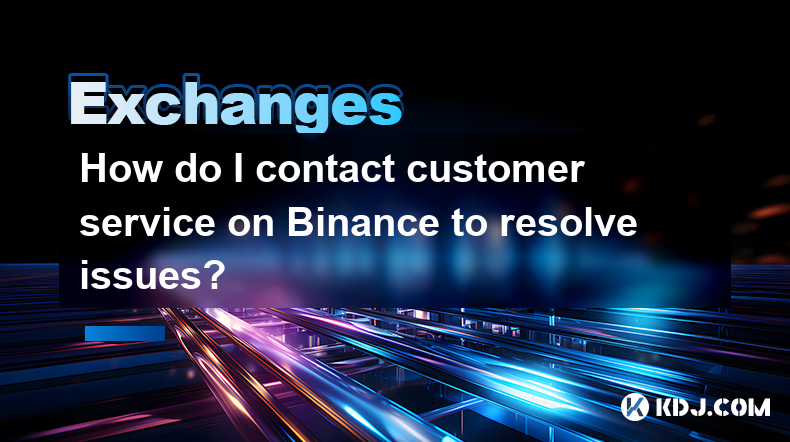
How do I contact customer service on Binance to resolve issues?
Mar 16,2025 at 04:30am
Key Points:Binance's customer service is primarily self-service, relying heavily on its help center and FAQs.Direct contact methods are limited, with email support being the most common route for non-urgent issues.Urgent issues may require using the in-app support system, though response times can vary.Understanding Binance's support structure and utili...
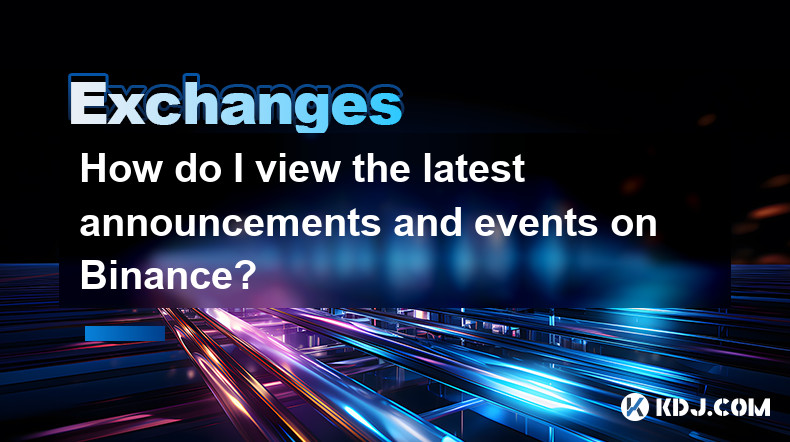
How do I view the latest announcements and events on Binance?
Mar 18,2025 at 10:18pm
Key Points:Binance utilizes multiple channels for disseminating announcements and events.The official Binance website is the primary source.Binance's social media platforms offer timely updates.Email subscriptions keep users informed about relevant announcements.Third-party aggregators can supplement official channels but require caution.How Do I View t...
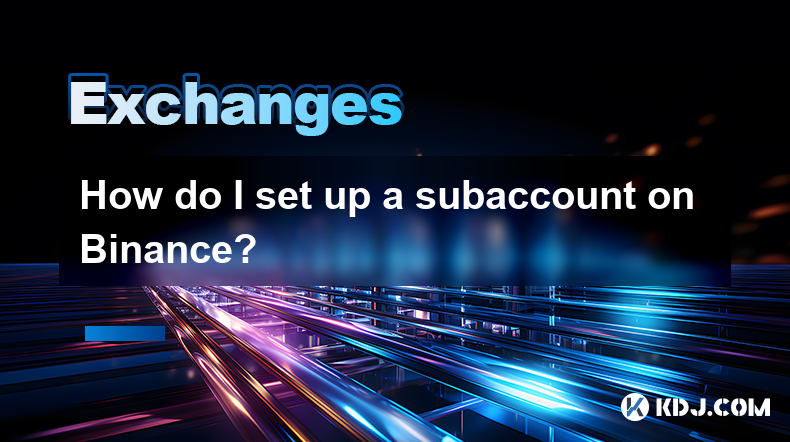
How do I set up a subaccount on Binance?
Mar 14,2025 at 01:50pm
Key Points:Binance does not offer traditional "subaccounts" in the sense of separate accounts with independent logins under a master account.Instead, Binance offers features like user-defined labels for better portfolio management and API keys for automated trading. These provide functionality similar to subaccounts.Setting up these features involves na...
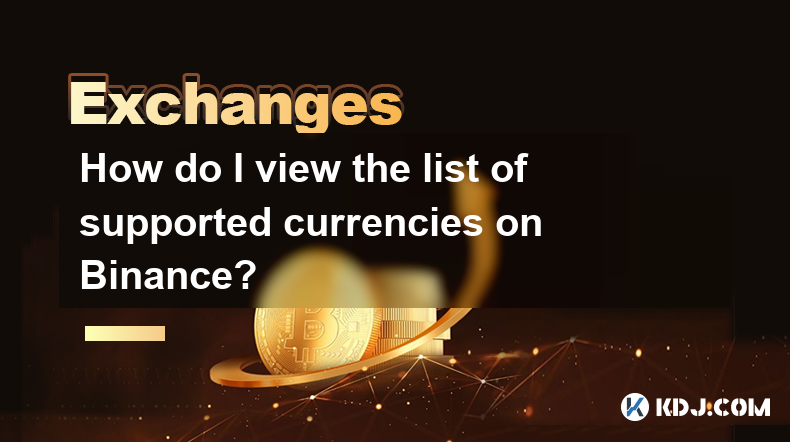
How do I view the list of supported currencies on Binance?
Mar 15,2025 at 05:35am
Key Points:Binance supports a vast and frequently updated list of cryptocurrencies. There's no single, static list.Finding supported currencies requires navigating Binance's website or app interfaces.Different sections of the exchange show different subsets of supported currencies (e.g., trading, staking, etc.).The availability of specific cryptocurrenc...
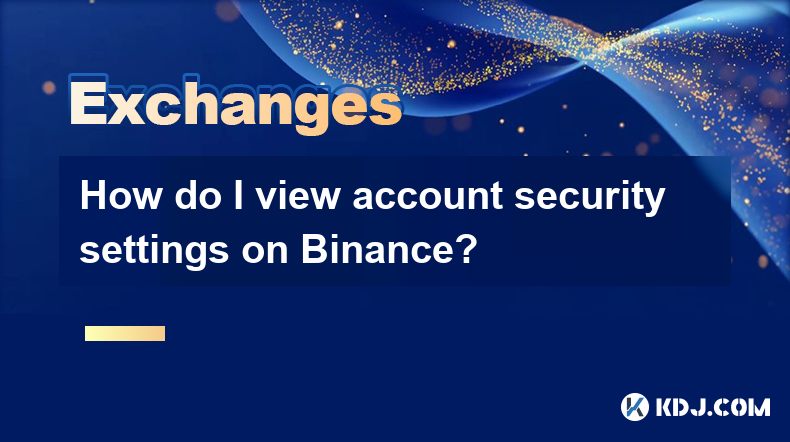
How do I view account security settings on Binance?
Mar 15,2025 at 08:40pm
Key Points:Binance's security settings are spread across multiple sections of your account. This article will guide you through each crucial area.Understanding and implementing these settings is paramount to protecting your cryptocurrency assets.We'll cover two-factor authentication (2FA), withdrawal whitelists, and other essential security features.Reg...
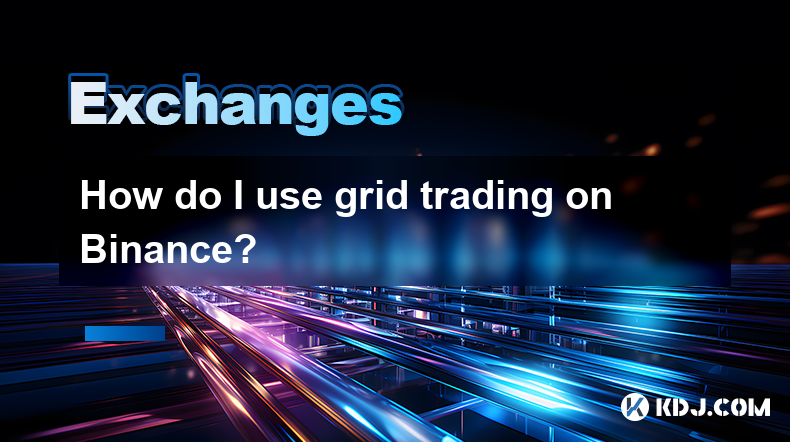
How do I use grid trading on Binance?
Mar 14,2025 at 04:25pm
Key Points:Grid trading on Binance involves automatically buying low and selling high within a defined price range.Binance offers a built-in grid trading bot, simplifying the process.Setting up a grid bot requires defining parameters like price range, grid quantity, and investment amount.Risk management is crucial, as losses are possible despite the aut...

How do I contact customer service on Binance to resolve issues?
Mar 16,2025 at 04:30am
Key Points:Binance's customer service is primarily self-service, relying heavily on its help center and FAQs.Direct contact methods are limited, with email support being the most common route for non-urgent issues.Urgent issues may require using the in-app support system, though response times can vary.Understanding Binance's support structure and utili...

How do I view the latest announcements and events on Binance?
Mar 18,2025 at 10:18pm
Key Points:Binance utilizes multiple channels for disseminating announcements and events.The official Binance website is the primary source.Binance's social media platforms offer timely updates.Email subscriptions keep users informed about relevant announcements.Third-party aggregators can supplement official channels but require caution.How Do I View t...

How do I set up a subaccount on Binance?
Mar 14,2025 at 01:50pm
Key Points:Binance does not offer traditional "subaccounts" in the sense of separate accounts with independent logins under a master account.Instead, Binance offers features like user-defined labels for better portfolio management and API keys for automated trading. These provide functionality similar to subaccounts.Setting up these features involves na...

How do I view the list of supported currencies on Binance?
Mar 15,2025 at 05:35am
Key Points:Binance supports a vast and frequently updated list of cryptocurrencies. There's no single, static list.Finding supported currencies requires navigating Binance's website or app interfaces.Different sections of the exchange show different subsets of supported currencies (e.g., trading, staking, etc.).The availability of specific cryptocurrenc...

How do I view account security settings on Binance?
Mar 15,2025 at 08:40pm
Key Points:Binance's security settings are spread across multiple sections of your account. This article will guide you through each crucial area.Understanding and implementing these settings is paramount to protecting your cryptocurrency assets.We'll cover two-factor authentication (2FA), withdrawal whitelists, and other essential security features.Reg...

How do I use grid trading on Binance?
Mar 14,2025 at 04:25pm
Key Points:Grid trading on Binance involves automatically buying low and selling high within a defined price range.Binance offers a built-in grid trading bot, simplifying the process.Setting up a grid bot requires defining parameters like price range, grid quantity, and investment amount.Risk management is crucial, as losses are possible despite the aut...
See all articles

















